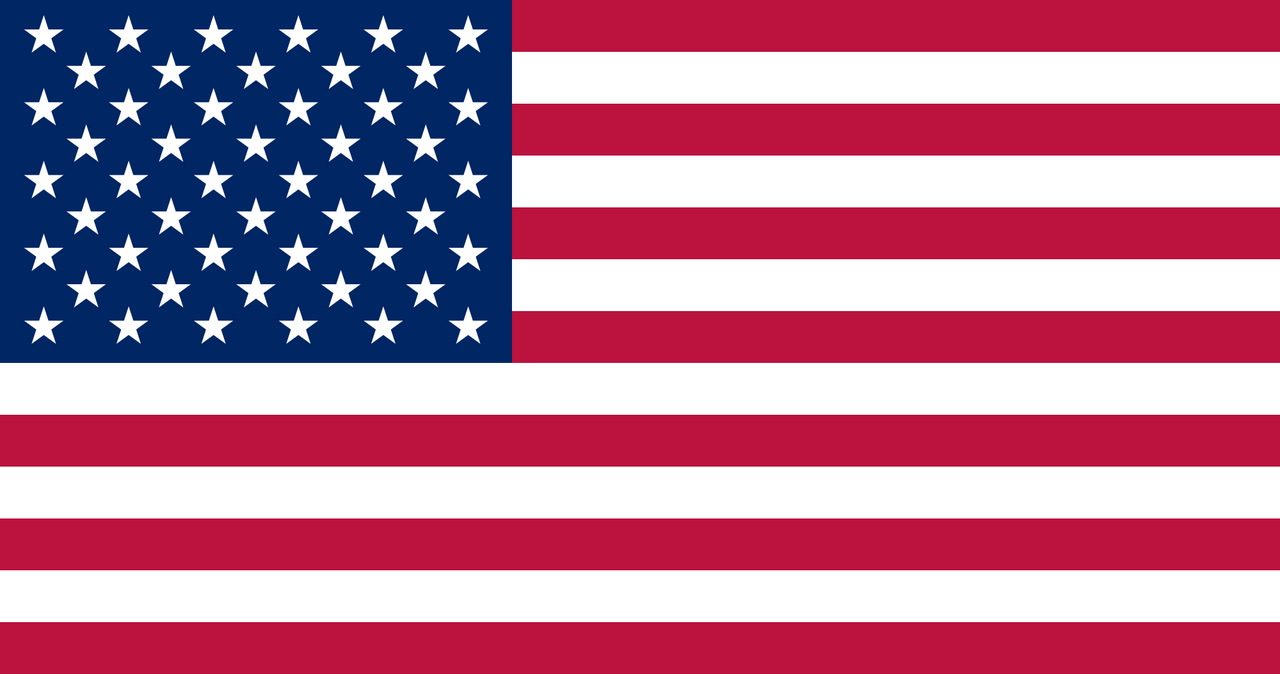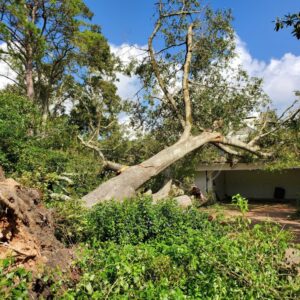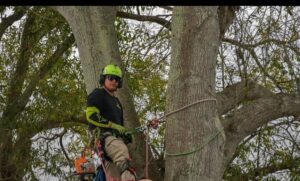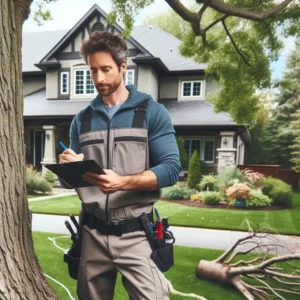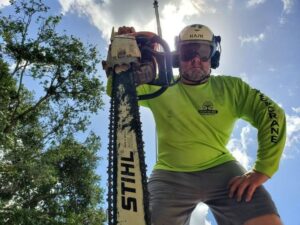Natural disasters can damage trees, putting people and property nearby at risk. Saving trees damaged by storms is a complicated process that requires careful thought about safety and value. By following these rules, property owners can protect their surroundings and raise the value of salvaged wood, which is good news in a bad situation.

Looking at Woodlands: Setting Priorities Save the
Woodlands have a lot of different kinds of trees, so saving them requires a plan. These tips can help you determine which storm-damaged trees require immediate removal.
1. The wind blows the trees in a single direction.
The tree trunk is still whole, with most of the roots sticking out of the ground. To ensure the best product, save these trees as soon as possible. If you’re in a mixed stand, remove all the wood suitable for sale. When cutting down these trees, please be careful and think about splitting the wood to use as firewood.
2. There are large trees covered in a significant amount of trash.
You should save a tree that is standing or leaning less than 45 degrees from the vertical. Make sure it has at least four live limbs. In mixed stands, please get rid of the wood that can be sold first, then consider splitting it up for firewood.
3. Broken Back, Few Living Limbs:
Recycle for wood pulp. If the wood remains usable within 6 to 12 months, prioritize pulpwood production for the upcoming year. If not, you should burn the wood or prepare the area to plant trees again.
We adhere to the same guidelines for shade trees.
We save storm-damaged shade trees the same way we save woodlands: by putting safety and value first. When cutting down damaged shade trees, keep these tips in mind:
Safety and product value should come first. When deciding whether to save or cut down damaged shade trees, safety and product value should come first. To make intelligent decisions, seek help from professionals such as foresters or certified arborists.
Think about urgency. Figure out how quickly you need to save wood that will go bad. If you leave trees alone for a long time, they may lose their quality or become more dangerous.
Most importantly, it’s important to stress the importance of putting safety first during removal. Storm-damaged trees may not be stable, which is dangerous for workers and people watching. Using the right tools and methods ensures safety and trust in the salvage process. This prevents further harm to people and property, fostering a sense of security and comfort among them.
We are looking for professional help.
While these guidelines can help you make decisions, it’s essential to stress how important it is to get professional help when dealing with trees that storms have damaged. Consulting foresters and certified arborists can assist you in making intelligent decisions about your property by providing advice and support.
In conclusion
The task of saving storm-damaged trees is challenging, requiring a careful balance between safety and maximizing the value of the saved wood. The fact that you own property means that you can change these rules to fit your needs. You can turn storm damage into a chance for renewal and growth by acting quickly, doing thorough assessments, and getting professional advice. This will show how resilient both nature and your property are. Safety is very important; do everything you can to protect your property and the area around you.
